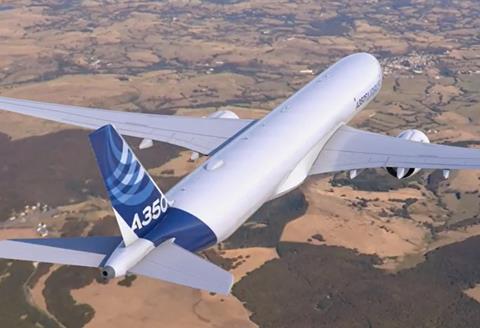Airbus has trimmed its 20-year outlook for freighter demand, while tipping it more in favour of new-build aircraft and the replacement market.
The airframer’s latest global market forecast predicts demand for 2,470 freighters by 2043, a slight reduction from last year’s figure of 2,510.
But Airbus expects the world freighter fleet to increase from the current 2,220 to 3,360 over the period, partly through higher retention of current aircraft – some 890 against the previous estimate of 720.
“New-build freighters have very long service lives,” says head of market analysis Bob Lange.

Airbus’s figures indicate the delivery demand will comprise more new-build aircraft, some 940, and fewer converted aircraft, around 1,530, than previously expected.
The balance has shifted more towards higher capacity freighters of 80t payload, accounting for 620 aircraft, and away from the smaller 10-40t single-aisle models which will total 970.
Airbus also sees 54% of the freighter deliveries intended for replacement, rather than growth, a higher proportion than the previous forecast’s 50.5%.
Lange says that, over the last 20 years, there has been a “much faster” growth of trade relative to GDP and that, after this long period of accelerated globalisation, trade is “converging” towards GDP.
While only 1% of freight is carried by air, he says, it accounts for 30% of freight value.
Lange says the freight market will more than double over the next two decades, with the express component – with an annual growth rate of 4.4% against general cargo’s 2.7% – increasing from 20% last year to 25% in 2043.


























